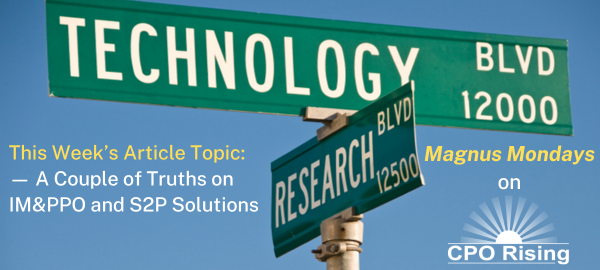This summer I’ve done considerable research into the Intake Management and Procurement Process Orchestration (IM&PPO) space. It’s a relatively new and exciting area and an example of the resurgence of innovation in the procurement tech space (other examples include sourcing automation and category management solutions). At Ardent Partners, we have written about IM&PPO, but in today’s article, I’ll add some additional thoughts and commentary.
“IM&PPO Is No Good on Its Own”
I’ve seen this statement a few times and, technically, I must agree. The requests and information collected via the intake management capability have to be executed to trigger the orchestration part. Thus, you need applications that can perform the necessary processes.
But that said, nearly all organizations have invested in ERP systems, with larger enterprises implementing additional procurement solutions — resulting in very few cases where IM&PPO would actually be “on their own.” In fact, IM&PPO solutions are built to extend and connect previous investments and to improve the usage of them. So, claiming that IM&PPO is no good on their own is a bit disingenuous, because they were never intended to be.
“S2P Should be Able to Do This”
“Should” is the operative word here. While S2P suites theoretically should be able to support any type of request, the reality is that they don’t. The workflow capabilities are typically built for standard purchasing requests that follow a standardized process. S2P suites cannot handle more complex processes where actions might need to occur outside of procurement in other systems (e.g., security checks for software, HR processes for temp labor, and so on).
The problem with S2P suites is that they are procurement centric, while IM&PPO solutions are built for non-procurement specialists. And although S2P suites have open APIs and pre-built connectors to many ERPs and partner solutions, they are built to manage the end-to-end procurement process within the same suite — which can be difficult for organizations that use more of a best-of-breed strategy. And even if there are exceptions to this (SAP, for example, has partnerships with both Icertis and Keelvar with pre-built connectors), it still doesn’t offer the same flexibility as the IM&PPO approach.
But the S2P vendors are taking notice and are starting to build (or even release) their own IM&PPO modules (e.g., Ivalua and GEP). I’m looking forward to seeing how well they stack up against the IM&PPO specialists.
The IM&PPO and S2P Convergence
But, even if IM&PPO and S2P are different, we will see a convergence of the two. In fact, we have already started seeing it. The S2P players will build or acquire IM&PPO capabilities in a similar way to how ERP providers approached S2P (SAP acquired Ariba and Fieldglass, Oracle built Cloud Procurement, Workday acquired ScoutRFP and built P2P).
On the other side, the IM&PPO providers will likely build out more S2P capabilities on their own (or make some acquisitions). Zip, for example, has already started doing that by offering some P2P as well as basic sourcing capabilities.
After all, we need both a user interface that makes it easy for end users to engage with procurement and do their job, as well as the proper tools for procurement professionals to support their internal customers!
As always, Ardent Partners is here to help and answer your questions, don’t hesitate to reach out.


